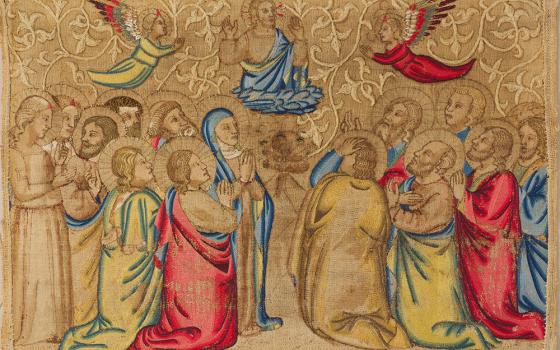Every commentator describes the rescue of the Chilean miners as a miracle, a concept that is typically used to describe, as the Oxford English Dictionary expresses it, “a marvelous event not ascribable to human power ... and therefore attributable to supernatural ... agency.”
But this remarkable and riveting accomplishment is, in fact, a demonstration of human power, machinery and rescue devices that were born not in some divine workshop but in the human imagination.
The event is not diminished but enlarged when we examine the richness of its sacramental and, therefore, profoundly human reality.
What has happened in the wet darkness in the caves beneath South America’s long left arm reveals, as the sacraments do, the religious mystery inherent in everyday life.
We stand as witnesses, as so many groups are characterized in the scriptures -- by-standers as men made leper-like by their exile in the depths are lifted up and cleansed so they can enter life once more.
What have we seen if not proof that what we call supernatural occurrences do not blossom on their own but always flower out of the soil of natural events, enriched by human concern, resourcefulness, and love?
The word miracle derives from the Latin mirari, which means to wonder. The word translated as miracle is found in the Greek as sign, wonder, or power -- notions that, in the family of language, are first cousins to sacrament.
The sacraments are not wispy ectoplasmic effects but express themselves through elements as basic as those encountered in the liberation of the Chilean miners from Sheol, the Old Testament concept for the “land of the dead … a subterranean region clothed in thick darkness.” (OED)
The Chilean setting for this accident is filled with familiar biblical and therefore sacramental vistas. A windswept desert is nearby through which the rescued miners must pass -- as the Israelites did in Egypt, and Jesus did in Palestine -- to discover their destinies through their arduous journeys.
We remember a place cut in the rock by Joseph of Arimathea as a burial place for Jesus.
As Jesus would escape that fate, so would these men. After bearing more than three months -- rather than three hours -- on their cross, darkness fell as it did on Calvary and they, too, may have wondered if God had forsaken them.
This rock is a sacramental Golgotha whose surface must be opened so that a cross with a drill bit sharper than the nails used by the Roman soldiers can become the instrument of salvation for those wrapped in biblical darkness below.
How familiar and powerfully sacramental is the sudden penetration of the darkness by the light, the light that many do not comprehend but that nearly blinds us as it scatters the shadows as a sacramental analog for Jesus’ bringing light to the world.
On the surface are the waiting crowds -- the women who have come to this Golgotha as the women who followed Jesus faithfully -- aware as only people can be who stand on the narrow ledge between life and death of how deep and heartbreaking life in the Spirit can be.
For here is miracle as an event that prompts wonder at our world and our existence and at what a hard subject religion turns out to be.
It is not an open book exam but a never ending test of our capacity to love and suffer and to believe in each other. It is -- we learn again in the half light of the rescuers’ repeated descents into Sheol -- a mystery that we cannot solve but must experience.
Over and over we watch Lazarus let the winding strips of his burial fall away as he steps back into life and into the arms of those who love him. These few steps in the darkness light up the wonder of every departure and return that we ever make, from here to a strange country on a hero’s journey, or from home to work on a commuter’s routine.
How could we miss the sacramental parallel between these men coming slowly -- after a gestation period of months -- up out of a rescue passage as narrow as the birth canal to be born again, to be bathed as newborns are, and to be welcomed into life again?
This could as easily be a symbol of what some make into a harrowing last judgment. But we can understand this imagery as an accidental gathering -- somewhat like passengers on an airplane who are surprised but not dismayed to discover that somehow, without planning, they have ended up making the same journey on the same day.
And how are these miners judged as they emerge into the light?
Much as we will be, for we may be surprised that the small things -- like our wandering thoughts or losses of patience -- seem less like great sins than the battle ribbons of being human.
The miners are welcomed; they would not have loved ones embracing them in tears of joy if they had not loved others just as deeply. This has been a miracle, but one built on God’s making us human rather than angelic.
It is a miracle because it is not beyond our human capacity to love and sacrifice for -- and to save -- each other. It is a miracle because it is filled, and it fills us, with so much wonder.
[Eugene Cullen Kennedy is emeritus professor of psychology at Loyola University, Chicago.]
Editor's Note: We can send you an e-mail alert every time Kennedy's column, Bulletins from the Human Side," is posted to NCRonline.org. Go to this page and follow directions: E-mail alert sign-up. If you already receive e-mail alerts from us, click on the "update my profile" button to add Kennedy to your list.







